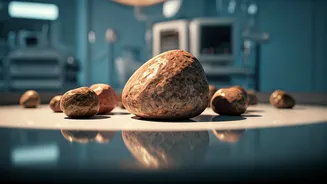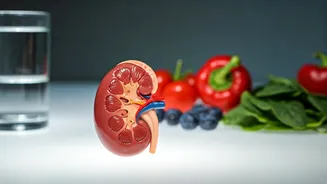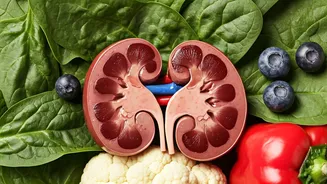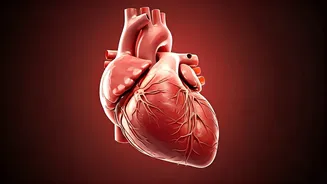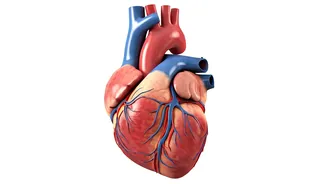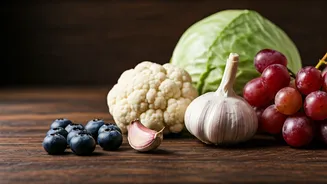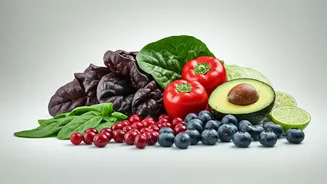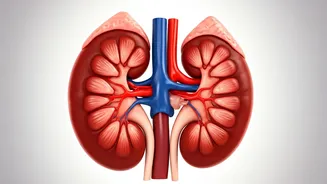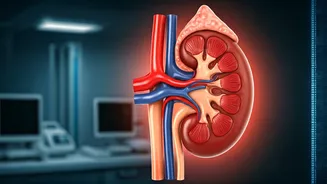What Are Kidney Stones?
Kidney stones are solid masses formed from crystals in the urine. These stones can range in size, from tiny particles that pass unnoticed to larger ones that can obstruct
the urinary tract, leading to significant discomfort. The primary cause of kidney stones involves the buildup of minerals and salts, such as calcium oxalate, calcium phosphate, and uric acid, in the kidneys. These substances crystallize and clump together, forming stones. Factors like inadequate fluid intake, a diet high in sodium and animal protein, and certain medical conditions can increase the risk of their formation. Additionally, a family history of kidney stones may also contribute to a higher likelihood of developing them. Understanding these fundamental aspects is crucial for understanding the potential triggers and implementing preventive strategies.
Recognizing the Symptoms
Identifying the symptoms of kidney stones is crucial for timely diagnosis and treatment. The most common symptom is intense pain in the side, back, or groin area. This pain, often described as a sharp, cramping sensation, comes in waves and can fluctuate in intensity. Other accompanying symptoms may include nausea, vomiting, and a persistent urge to urinate. The urine might appear cloudy, have a foul odor, or contain blood, indicating irritation or damage to the urinary tract. Sometimes, a person might experience fever and chills if an infection develops. The severity of these symptoms usually depends on the size and location of the stone within the urinary system. Recognizing these signs and seeking medical attention can prevent complications and lead to effective management.
Causes and Risk Factors
Several factors contribute to the formation of kidney stones. A diet rich in sodium, animal protein, and oxalates (found in foods like spinach, rhubarb, and nuts) can elevate the risk. Insufficient fluid intake is a significant contributor, as it leads to concentrated urine, fostering crystal formation. Certain medical conditions, such as hyperparathyroidism and some urinary tract infections, also increase the likelihood of developing stones. Family history plays a role too; if a family member has had kidney stones, the risk increases. Additionally, some medications, including certain diuretics and antacids, can affect the balance of substances in the urine, potentially leading to stone formation. By understanding these risk factors, individuals can take preventive measures to mitigate their personal risk and maintain kidney health.
Differentiating from Gallstones
Kidney stones and gallstones are both common types of stones, but they form in entirely different parts of the body, and their causes, symptoms, and treatments are distinct. Kidney stones form in the kidneys and are composed of minerals and salts present in urine. Gallstones, on the other hand, develop in the gallbladder and are primarily made of cholesterol or bilirubin. While both conditions can cause severe pain, the pain associated with kidney stones typically radiates from the back or side to the groin. Gallstone pain often occurs in the upper right abdomen and may radiate to the back or shoulder. The diagnostic approaches and treatments for these two conditions also differ, emphasizing the importance of accurate diagnosis for effective medical management. Correct diagnosis is vital to receive appropriate and effective treatment, and therefore it is always best to consult a medical professional.
Prevention Strategies: Hydration
The cornerstone of preventing kidney stones is adequate hydration. Drinking plenty of water helps to dilute urine, reducing the concentration of stone-forming substances. A general recommendation is to drink at least 2-3 liters of water per day, although the exact amount can vary depending on individual needs and activity levels. Staying well-hydrated throughout the day is important, rather than consuming a large amount of fluid all at once. Drinking water regularly helps flush the kidneys and prevent the buildup of minerals that can lead to stone formation. Additionally, it is beneficial to avoid excessive consumption of sugary drinks, which can contribute to dehydration and may increase the risk of stone formation. This is one of the most practical and effective strategies for reducing the risk of kidney stones.
Dietary Adjustments
Dietary adjustments can significantly reduce the risk of kidney stones. Limiting sodium and animal protein intake is advisable, as they can contribute to stone formation. Reducing the consumption of oxalate-rich foods, such as spinach, rhubarb, nuts, and chocolate, is another key consideration, especially for individuals at high risk. For those with a history of calcium oxalate stones, healthcare professionals may recommend limiting the intake of these foods. Increasing the consumption of calcium-rich foods can surprisingly help; it can bind with oxalates in the digestive tract, preventing their absorption and reducing the risk of stone formation in the kidneys. Consulting a healthcare provider or a registered dietitian can provide personalized guidance on dietary modifications that best suit individual needs and risk factors.
Medical Treatments and Management
The treatment for kidney stones depends on their size, location, and the severity of symptoms. Small stones often pass naturally with increased fluid intake and pain management. For larger stones, medical interventions become necessary. Medications, such as alpha-blockers, can help relax the ureter muscles, facilitating stone passage. Extracorporeal shock wave lithotripsy (ESWL) uses sound waves to break the stones into smaller fragments that can then pass through the urine. Ureteroscopy involves inserting a thin tube with a camera into the ureter to remove or break up the stone directly. In rare cases, surgical procedures may be required to remove very large stones. Pain management is a crucial aspect of treatment, and doctors may prescribe pain relievers to manage the severe pain associated with kidney stones.
